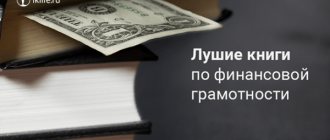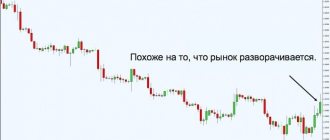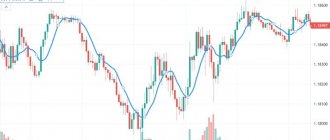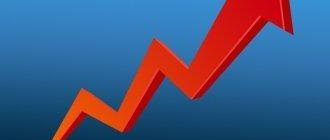Become a professional trader
You write in the search “Books about trading” and get in response 2 million top books, from just the list of which you can get confused. How long will it take to study them? Will this knowledge be useful to me? Will this help me become a successful trader? After all, to become a successful trader it is not enough to read and study all the top books on technical analysis and fundamentals.
If you look at successful traders, some of them are better versed in technical analysis, others are gurus in algorithmic trading. But all of them, in addition to technical knowledge, are united by the will to win, endurance, and they approach life and work with humor. It turns out that to become successful, you need not only technical analysis, but also personal qualities. And in order to develop what you lack, we offer you the TOP 20 books on trading for beginning traders.
George Soros "Alchemy of Finance"
The book by the famous speculator gives an understanding of how to make decisions in difficult “combat” conditions of real trading. Soros shares his own philosophy and view of the market. In his opinion, not only investors and traders influence the market situation, but also the market on them. Digesting 400-odd pages of the book will not be easy, but considering the theory of reflexivity is very useful for both beginners and experienced traders. Soros calls reflection a phenomenon when the market and its participants mutually increase their influence on each other, changing the fundamentals and provoking historical changes in the course of trading.
Benjamin Graham, David Dodd "Security Analysis"
Graham's timeless and complete guide is the third masterpiece after The Intelligent Investor and Financial Statement Analysis. 3 books together reveal the phenomenon of the author and the investment processes as such. Graham's admirer and follower Warren Buffett claims that his point of view on investments was formed 15% by Philip Fisher, and the remaining 85% was influenced by Graham. The book contains many examples of evaluating stocks, bonds, and company statements typical of the 20th century, which remain relevant today.
Michael N. Kahn “Technical Analysis”
The book explains many complex concepts from the trading vocabulary in simple words: bars, support and resistance lines, moving averages, reversal and continuation patterns, etc. The material in the book is designed for any market, despite the fact that only stocks are considered.
The author is a technical analyst with years of experience working for well-known financial companies. The struggle between supporters of fundamental analysis and supporters of technical analysis has been going on for a long time. M. Kahn is on the side of charts, indicators and figures.
Throughout the book, he conveys the idea that psychology plays one of the decisive factors in setting prices. The mood of the crowd can be seen in the signals that the chart sends. The task of technical analysis is to respond in a timely manner to changing trends. And this will inevitably lead to an increase in profits and a decrease in the number of unprofitable transactions.
Benjamin Graham "The Intelligent Investor" The Complete Guide to Value Investing"
Since the book's first publication in 1949, it has been considered the bible of the stock market. it is praised by Warren Buffett, who considers it the best book on investing. In a casino, everything is decided by chance, and trading on the stock exchange is a complex fundamental scientific discipline.
What is the difference between investing and speculating in stock markets?
How do the strategies of active and passive investors differ?
How exactly to analyze securities if you are not yet a market professional?
These and other questions are commented on in detail in each chapter by Wall Street Journal investment columnist Jason Zweig, looking at examples in relation to modern markets.
"Memoirs of a Stock Operator" - Edwin Lefebvre
This is a work of fiction that tells the story of Jesse Lauriston Livermore. His biography is notable for the fact that, as a trader, the main character was able to fall into the abyss several times, losing millions of dollars, and then rise, earning the same millions.
In addition to telling the story of Livermore's rise and fall, the author also gave practical, useful tips for analyzing demand surges.
The book was first published in 1923. Despite this, it has not lost its popularity among practicing investors today. It accurately describes the specifics of a trader’s thinking, his ups and downs. It perfectly illustrates the psychology of trading.
Bernard Baumol "Secrets of economic indicators"
Experienced investors know that the hidden keys to future trends in the economy and investments will be macro indicators - macro statistics have too much influence on the markets. A detailed calculation of each indicator and a description of its impact on changes in financial assets makes the book a full-fledged reference book or textbook for a trader. And even if only American indicators are described there, this is quite enough, because the movement of financial markets is most based on US economic statistics.
M. Kovel “Exchange trading based on trends”
In order to go with the flow of the trend, it is not enough to simply relax. Michael Covel's book provides the set of tools you need to identify a trend, confidently follow its rapid flow, and get out in time before the current takes you straight to the waterfall that will kill your accumulated profits. Each of the tools presented in this book contains a complete and detailed description of its practical application in the market, which will be understandable to beginners and useful to professional traders.
Philip Fisher "Common Stocks and Extraordinary Returns"
Fisher is considered the greatest investor of all time. The English newspaper Morningstar wrote about this. The book includes 3 works that have become classics of world trading - “Ordinary Stocks and Extraordinary Income”, “Conservative Investors Sleep Well” and “Towards an Investment Philosophy”.
The cherry on the cake is a 15-point algorithm for selecting interesting stocks.
One of the main factors in choosing the most common stocks is an understanding of the prospects, whether there is reason to assume the future growth of profits of a particular company.
In the book, Fisher gives recommendations on how to competently compile an investment portfolio and choose the right moment to buy/sell securities.
Aswath Damodaran “Investment tales. Debunking myths about win-win stock strategies"
The author is a well-known US expert in the field of investments and corporate finance. The book presents the basic theory and detailed analysis of 13 fundamental investment strategies. Moreover, Damodaran connects theory with the realities of the modern market and exposes the myths associated with them. Each chapter is a separate lesson for the investor, which contains practical recommendations on the use of strategies
Steve Nison “Beyond Candlesticks”
In 1990, Steve Nison introduced a strong mechanism to Western traders, whereby Japanese traders had a competitive advantage for many years. Currently, after the publication of this book, which reveals the entire list of the most powerful Japanese mechanisms, Nison has opened a new level in improving technical analysis.
In his book, he introduced us to all the tricks of using the 4 most significant mechanisms that the Japanese kept a big secret from everyone. These include: Kagi charts, Renko charts, three-line breakout charts and the difference index, which represent an amazing variety of different tools for recording and forecasting price fluctuations and favorable trading conditions.
John J. Murphy "The Visual Investor." How to identify trends"
The popular trend with visualization of information is applicable even in trading - it is much more practical to present data in the form of a graph, especially if the trader is a visual person. There are, of course, more complex methods of obtaining and processing information. But when a trader knows how to build and read charts, the exchange becomes clearer, and trading is at least to some extent easier. This is exactly what John Murphy teaches in his manual.
By constructing a chart yourself, then based on it it is easier to understand the direction of price movement and determine the characteristics of specific offers. The skill of charting is invaluable - a trader will be able to effectively track trends and the degree of overbought in non-trending markets. Moreover, the presentation style in the book is very accessible; key aspects are discussed very consistently and are supported by numerous examples and illustrations.
M. Douglas “Zone Trading”
The book reveals a broad view of all the difficulties that arise for a person faced with financial markets. When it comes to the realization that a transaction does not involve consultation and advice from brokers, and the acquisition or sale is a very complex operation that gives unexpected results. The book takes us to a sound psychological approach to achieving sustainable, favorable trading outcomes. The author does not provide a ready-made trading model; his goal is completely different. He aims to explain how to reason and think to become an effective trader.
David Cohen "Stock Market Psychology: Fear, Greed and Panic"
What is more important on the stock exchange - the psychological factor or technical and theoretical preparation? It's like asking which oar is more important for rowing, the left or the right. Most analysts recognize psychology only in words, but in reality they do not delve into it much. I wonder what they will sing when they are faced with their own greed, fears, information overload, market pressure and other aspects that will force them to leave the exchange under the hooting of more successful rivals?
The book is very helpful in building the right psychological attitude in trading, which will benefit both beginners and experienced ones.
Courtney Smith “How to make consistent money in the FOREX market”
The book reflects almost 25 years of experience of the author in trading. It includes everything related to trading, but the main question is centered around how to make working on the Forex exchange bring in a constant income.
Why the book is worth reading
– The book tells us how to get big money with just access to the Internet. This - - Book is your guide to the Forex market, it reflects all the terms and systems that will be useful to you, as well as the latest trading techniques.
“You can find out how the great George Lane achieved success.”
– Specific methods are given that guarantee profit in the short and long term.
-Great importance is paid to the psychology of traders.
Who is this book for?
It will be useful for both new and professional traders.
Timofey Martynov “Trading mechanism. How to build a business on the stock exchange"
A small monograph by a domestic venerable market expert will be useful for both beginners and experienced traders. It is surprising how such a small work, where several pages are devoted only to the table of contents, the author managed to squeeze in a lot of topics and cover them perfectly - there is a personal story, an analysis of unsuccessful transactions, a lot of information on the structure of the market and schemes for conquering it.
Martynov describes well how domestic trading works and what hidden problems are inherent in it.
This is one of the best domestic books on trading for beginners, which helps to adequately assess their abilities and capabilities and gives guidance on whether trading is worth making a lifelong pursuit or choosing another direction to generate income.
Dean Lundell "The Art of War for Traders and Investors"
One of Alexander Gerchik’s favorite books was written by the ancient Chinese warrior Sun Tzu, “The Art of War.” By analogy, modern trader Dean Lundell decided to write about the correct conduct of stock trading, having seen many similarities between the ancient Chinese military art and modern trading.
The strategy of military operations and the stock exchange have similar golden rules - the choice of optimal tactics within the framework of the required strategy, the ability to overcome one’s own fears, overcome doubts and indecision, correctly perceive what is happening, and objectively assess the situation and the enemy.
After all, it is not enough to know the theory and technique of trading - you need to be able to cope with yourself and correctly interpret what is happening. And this is equally important both in battle and in trade.
Eric Nyman "The Trader's Small Encyclopedia"
Don’t look here for ready-made recipes, blind copying of which will help you trade consistently and successfully. For beginners, the book will give basic concepts, terms and methods that work when trading on the stock exchange. After reading it, it will be easier for you to understand what analysts are talking about when they comment on the situation in the financial markets. And you will be able to choose the most suitable one from the many described trading methods without risking money. The main thing is to strictly follow the exchange rules, and not count on ephemeral luck.
8. Edwin Lefevre. Memoirs of a stock speculator
An autobiographical classic of trading - the rules described in the book will always be relevant. There are few books for traders that become reference books, but Lefebvre’s memoirs are just that – they tell you how to act on the stock exchange and what to avoid. There's a lot of psychology here. And just 2 pieces of advice for beginners - don’t listen to anyone but yourself, and act only with a cool head. And even if the actions do not lead to the result you expect, this is YOUR result, your personal experience, from which you can draw a conclusion in order to act more wisely next time.
“Think big and don’t slow down!” Author Donald Trump
The work, written by the President of the United States, has long been in the top ten books for traders and among the literature recommended for reading by people who want to achieve a high position. On its pages is a politician's success story, only from a financial point of view. The main idea is that you don’t need to slow down, you need to think globally. Is his advice realistic? And to do this, you just need to look at the income the Trump corporation receives annually.
Surprisingly, the tycoon’s recipes are indecently simple and quite applicable even in everyday life, not to mention the work of a trader. Only a persistent person can become rich - this is what Trump writes. As a bonus, the author described several awkward situations from life and told how they turned out for him.
Where can I download:
“Exchange at your fingertips” Viktor Ilyin, Valery Titov
This book about trading will help a beginner better understand the stock market, its structure, mechanisms and principles of operation. You will find in it a lot of useful information on the development of the stock exchange, its features and the intricacies of trading on it. After reading this book, you will not only learn how to properly manage your money, but also how to increase it in the stock market.
Stephen Akelis “Technical Analysis from A to Z”
With the development of computer technology, technical analysis has become more convenient to carry out using new information technologies. Stephen Akelis is not only a financial professional. He became a pioneer in computer investing. His first program was written back in the 70s of the last century. Today, the products of the company created by Stephen are well-deservedly popular throughout the financial world.
The book is written from simple to complex, which is what a novice trader who is just trying to understand complex analytical tools needs.
In the 1st part, the author gives the basics of technical analysis. And in the 2nd - a description of existing indicators and methods of graphical analysis. For each tool there is not only a definition, but also a practical example of its application.
This book can be considered as a reference book, a textbook for beginners and a reference book for professionals. The name speaks for itself.
"Technical Analysis of Financial Markets" John J. Murphy
Of the many books on stock trading, this is considered the best in the field of technical analysis. Despite the complexity of the given topic, the book is written in clear language and is replete with a huge number of illustrated examples with detailed explanations. It describes the basic tools for analysis, price models, time cycles, trends, strategies and tactics that every trader will appreciate.
Igor Morozov “Forex. From simple to complex"
The author tells the story of the origin of money and its properties. Shows the mechanics of the functioning of the Forex market, reveals the concept of “exchange rate”.
Igor Morozov talks about technical analysis of markets, using the example of several types of indicators (trend, oscillator, volume). Explains the fundamental reasons for the movement of exchange rates, the relationship between central banks of different countries. Examines in detail the central banks (including the Federal Reserve System) of the world's leading currencies, methods and tools for conducting monetary policy. Talks about macroeconomic indicators (central bank reports), which assess the state of the world's largest economies, as well as what movements they provoke in the foreign exchange market.
An excellent book for learning to fundamentally understand the foreign exchange market.
“Trading with Dr. Elder. Encyclopedia of stock trading" Alexander Elder.
This is simply the trader's Bible. The book was written for beginning traders and consists of three sections describing different aspects of trading. The main focus of the book is money management and stock market psychology. You will also learn how to control your risks and find detailed answers to popular questions.
"Encyclopedia of Trading Strategies" - Jeffrey Katz, Donna McCormick
Literature for algorithmic traders, financial analysts, strategy testers and MTS, who are aimed at increasing their efficiency and reliability of work. In the book you will see:
- in-depth market analysis based on historical data and numerous tests;
- debunking myths;
- scientific approach to creating bidding systems;
- description and analysis of unprofitable and risky approaches that can lead to bankruptcy;
- advice on how to effectively control risks;
- analysis of types of entry into and exit from transactions;
- examples of code written in C++.
The book is written in dry language without water, so it is easy to read.
"The Count of Monte Cristo" by Alexandre Dumas.
Unexpected, right? It's not just about treasure hunting and the adventures of a rich, eccentric avenger. A common thread running through the book is the idea that results can only be achieved with a clear, cool head, the right strategy and the desire to learn and develop. A useful re-read for experienced investors, and also suitable for dummies.
"Way of the Turtles" The author is Kurtis Feis, and the initiator of the experiment is Richard Dennis.
Two traders in the 1980s bet each other $1 that they could take a man (“turtle”) off the street and teach him how to trade. There was a competition of 1200 people. Of these, 24 people were selected. One model was shown. In 2 years, these people earned 200 million dollars - and this was in 1986 without computers and the Internet, which did not exist then! All transactions were carried out only by voice. The model implied a trade in which you could be wrong 11 months a year, 10% of positive entries, and still earn normally in total for the year. From all the literature on trading, this story not only scientifically and step-by-step sets out what and how to do, but at the same time it is also captivating in such a way that it is impossible to put it down!
M. Kovel “Turtle Traders”
In this book, Michael Covel introduces readers to previously unpublished details of the famous experiment organized by the legendary Chicago trader Richard Denis, who, having begun his career in 1966, at the age of seventeen, quickly learned the intricacies of stock trading and earned $200 million by 1983. One day, with his colleague William Eckhardt, whether it was possible to teach trading to a “man on the street” or whether it required innate abilities, he placed an ad in the newspaper, inviting everyone to a two-week course. Several thousand people applied, but only twenty-three were accepted. They became the legendary “turtles” who earned Dennis $100 million. Some of the participants in the experiment continued trading after it ended, becoming incredibly successful traders, while others fell into obscurity. Michael Covel has tracked the fate of the majority. He found out what and how they were taught, including the rules for entering and exiting the market and personal advice from Denis and Eckhardt, and spoke about it in the book - the most complete and detailed about the history of the “turtles”. The author not only reports the details of an unprecedented experiment, but also analyzes them and draws conclusions about why some “turtle traders” were more successful than others. This makes the book interesting for those who are ready to experiment and try their hand at stock trading.











